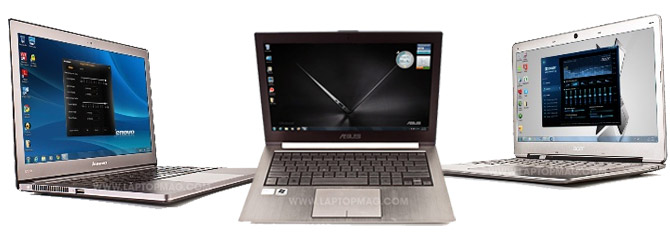Tech to Watch 2012: Year of the Ultrabook

When it comes to laptops, 2012 is the year of the Ultrabook. Designed to compete against the MacBook Air but also tablets, Ultrabooks are superthin, resume from sleep almost instantly, and last nearly all day on a charge. And with second-generation Intel Core processors under the hood—and a new CPU explicitly designed for Ultrabooks on the way—shoppers should expect top-level performance.
Windows PC shoppers already have a fair number of MacBook Air alternatives from which to choose, but in 2012 we’ll see lower prices and a wider range of sizes.
An Ultrabook is a fundamental step forward in notebook design,” said Greg Welch, Director of the On-the-Go Market Segment for Intel’s Mobile Client Platforms group. “We think that with a variety of OEMs taking a variety of approaches, there’s just more choice, there’s more competition, economies of scale get going.
Why It’s Important
If you go to Best Buy’s site right now you’ll see Ultrabooks already listed as a category, which tells you how important this segment is for Intel, retailers, and anyone who makes a laptop. In fact, Intel started a $300 million fund just to jumpstart the Ultrabook ecosystem.
The first Ultrabooks we reviewed fell a little flat because they cut too many corners. The Acer Aspire S3, for example, had a somewhat chintzy plastic body, while the Asus Zenbook UX31 had an amazingly attractive design marred by an erratic touchpad.
Since then, however, we’ve seen a steady improvement. The Toshiba Portege Z835 delivers fantastic value at just $849, while the HP Folio 13 impresses with extra-long battery life and a comfy backlit keyboard for $900.
Stay in the know with Laptop Mag
Get our in-depth reviews, helpful tips, great deals, and the biggest news stories delivered to your inbox.
How It Will Change Your Life
One of the best things about an iPad is that you can just pick it up, turn it on, and start using the device immediately. And that’s exactly what Intel and its partners are trying to mirror with Ultrabooks, most of which feature highly responsive solid state drives. And because Ultrabooks are highly portable, you can just slip it out of a bag and start working—without having to hunt for an outlet.
Today’s second-generation Intel Core processors provide plenty of pep for most tasks, but Intel’s Ivy Bridge CPUs (expected to arrive in April) will propel the category further. The more efficient chips will use a small 22-nanometer architecture and support both Thunderbolt and USB 3.0.
Outlook
Intel claims Ultrabooks combine the best features of a laptop and a tablet, but manufacturers will need to convince the masses that they’re the next big thing instead of the next netbook.
Today, Ultrabooks command at least a $300 premium above the average laptop, but over time prices should drop as more vendors invest in the category. We expect at least one sub-$700 model in time for back to school. In 2012 we’ll also see diversification in terms of size and features, with some Ultrabooks sporting 14-inch and 15-inch screens.
Towards the end of the year, touch capability and Windows 8 could give Ultrabooks yet another shot in the arm as notebook makers look for ways to leverage the new capabilities of Microsoft’s operating system. “Over time we think touch is going to become a de facto requirement,” said Intel’s Welch.

